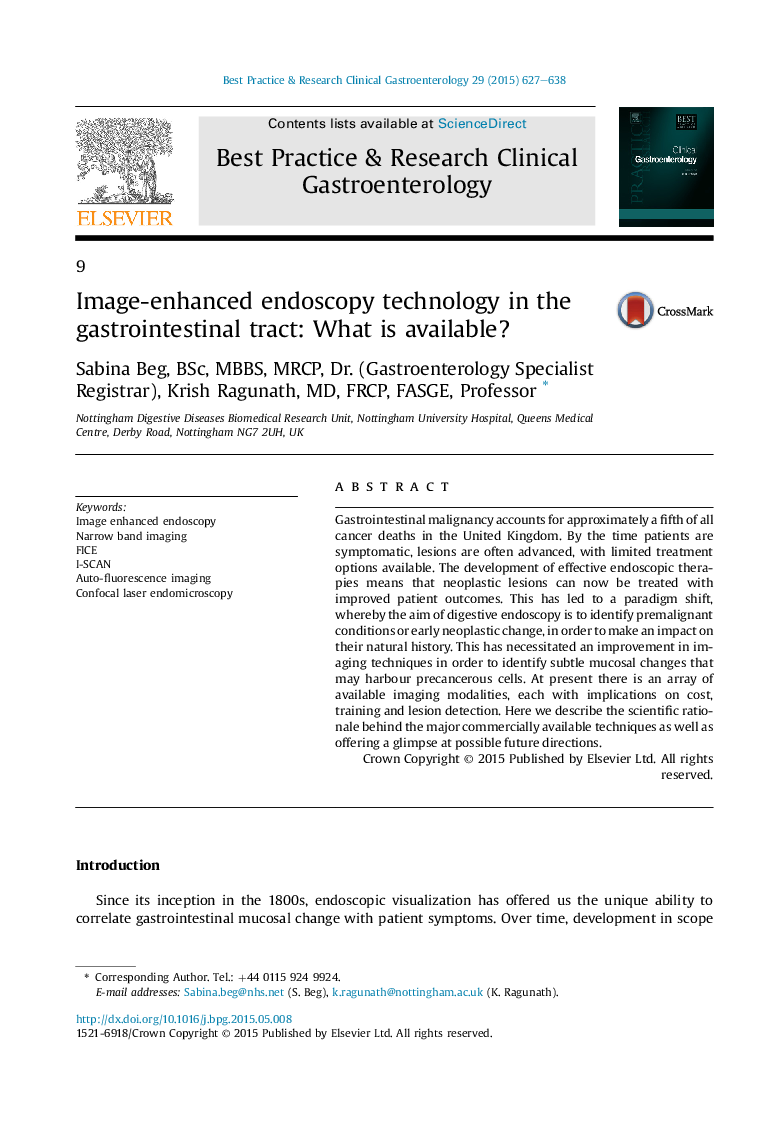| Article ID | Journal | Published Year | Pages | File Type |
|---|---|---|---|---|
| 3254092 | Best Practice & Research Clinical Gastroenterology | 2015 | 12 Pages |
Gastrointestinal malignancy accounts for approximately a fifth of all cancer deaths in the United Kingdom. By the time patients are symptomatic, lesions are often advanced, with limited treatment options available. The development of effective endoscopic therapies means that neoplastic lesions can now be treated with improved patient outcomes. This has led to a paradigm shift, whereby the aim of digestive endoscopy is to identify premalignant conditions or early neoplastic change, in order to make an impact on their natural history. This has necessitated an improvement in imaging techniques in order to identify subtle mucosal changes that may harbour precancerous cells. At present there is an array of available imaging modalities, each with implications on cost, training and lesion detection. Here we describe the scientific rationale behind the major commercially available techniques as well as offering a glimpse at possible future directions.
